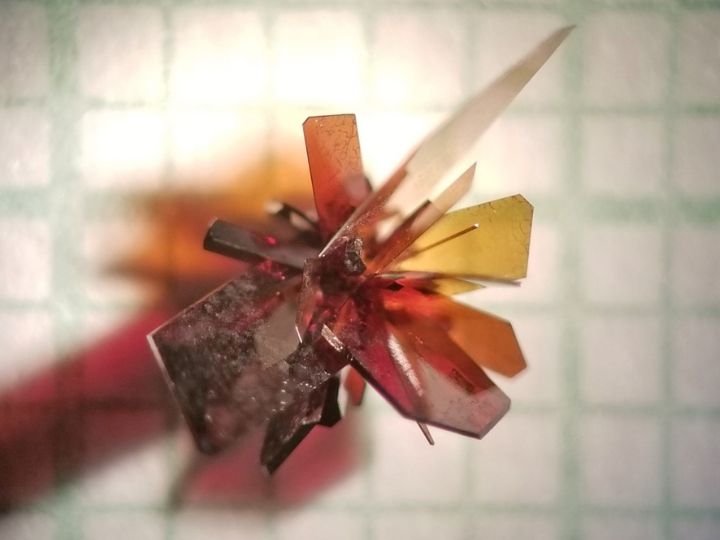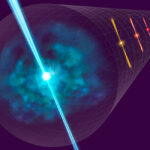ブラックホールと星形成を結びつける新たな研究、ジェームス・ウェッブ宇宙望遠鏡に道を開く New research links black holes to star formation, paving the way for the James Webb Space Telescope
2022-07-21 マサチューセッツ大学アマースト校
ブラックホールと星の相互作用の研究が難しい理由のひとつは、ブラックホールと星の相互作用が、巨大な銀河の塵の雲の向こう側で起こっているため、実際に見ることができないからです。
ダストが可視光を吸収すると熱が発生し、人間の肉眼では熱を見ることができませんが、赤外線望遠鏡では見ることができるのです。
スピッツァー宇宙望遠鏡を用いて、地球に比較的近い明るい銀河の中間赤外線波長域を調べ、これらのトレーサーの測定値を、より明瞭になるように校正する。一旦、チームがこのより明確な観測を手にすると、彼らは、実際に、ブラックホール成長と星形成が同じ銀河で同時に起こっていて、それらがお互いに影響し合っているように見えることを確認することが出来ました。さらに、この2つの現象がどのように関連しているかを示す比率を計算することもできました。この成果は、科学的に素晴らしいものであるばかりでなく、中間赤外線を観測できるJWSTに搭載することで、より詳細な解明が可能になります。
<関連情報>
- https://www.umass.edu/news/article/how-do-galaxies-evolve-umass-amherst-undergrad-may-have-provided-missing-link
- https://iopscience.iop.org/article/10.3847/1538-4357/ac778b
赤外線で光る銀河の中間赤外線スペクトルを用いて、星形成とブラックホール降着の速度を同時に測定する Measuring Star Formation and Black Hole Accretion Rates in Tandem Using Mid-infrared Spectra of Local Infrared Luminous Galaxies
Meredith Stone, Alexandra Pope, Jed McKinney, Lee Armus, Tanio Díaz-Santos, Hanae Inami, Allison Kirkpatrick, and Sabrina Stierwalt
The Astrophysical Journal Published 2022 July 21
DOI:https://doi.org/10.3847/1538-4357/ac778b

Abstract
We present the results of a stacking analysis performed on Spitzer/Infrared Spectrograph high-resolution mid-infrared (mid-IR) spectra of luminous infrared galaxies (LIRGs) in the Great Observatories All-Sky LIRG Survey. By binning in relation to mid-IR active galactic nucleus (AGN) fraction and stacking spectra, we detect bright emission lines [Ne ii] and [Ne iii], which trace star formation, and fainter emission lines [Ne v] and [O iv], which trace AGN activity, throughout the sample. We find that the [Ne ii] luminosity is fairly constant across all AGN fraction bins, while the [O iv] and [Ne v] luminosities increase by over an order of magnitude. Our measured average line ratios, [Ne v]/[Ne ii] and [O iv]/[Ne ii], at low AGN fraction are similar to H II galaxies, while the line ratios at high AGN fraction are similar to LINERs and Seyferts. We decompose the [O iv] luminosity into star formation and AGN components by fitting the [O iv] luminosity as a function of the [Ne ii] luminosity and the mid-IR AGN fraction. The [O iv] luminosity in LIRGs is dominated by star formation for mid-IR AGN fractions ≲0.3. With the corrected [O iv] luminosity, we calculate black hole accretion rates (BHARs) ranging from 10−5 M⊙ yr−1 at low AGN fractions to 0.2 M⊙ yr−1 at the highest AGN fractions. We find that using the [O iv] luminosity, without correcting for star formation, can lead to overestimation of the BHAR by up to a factor of 30 in starburst-dominated LIRGs. Finally, we show that the BHAR/star formation rate ratio increases by more than three orders of magnitude as a function of mid-IR AGN fraction in LIRGs.



